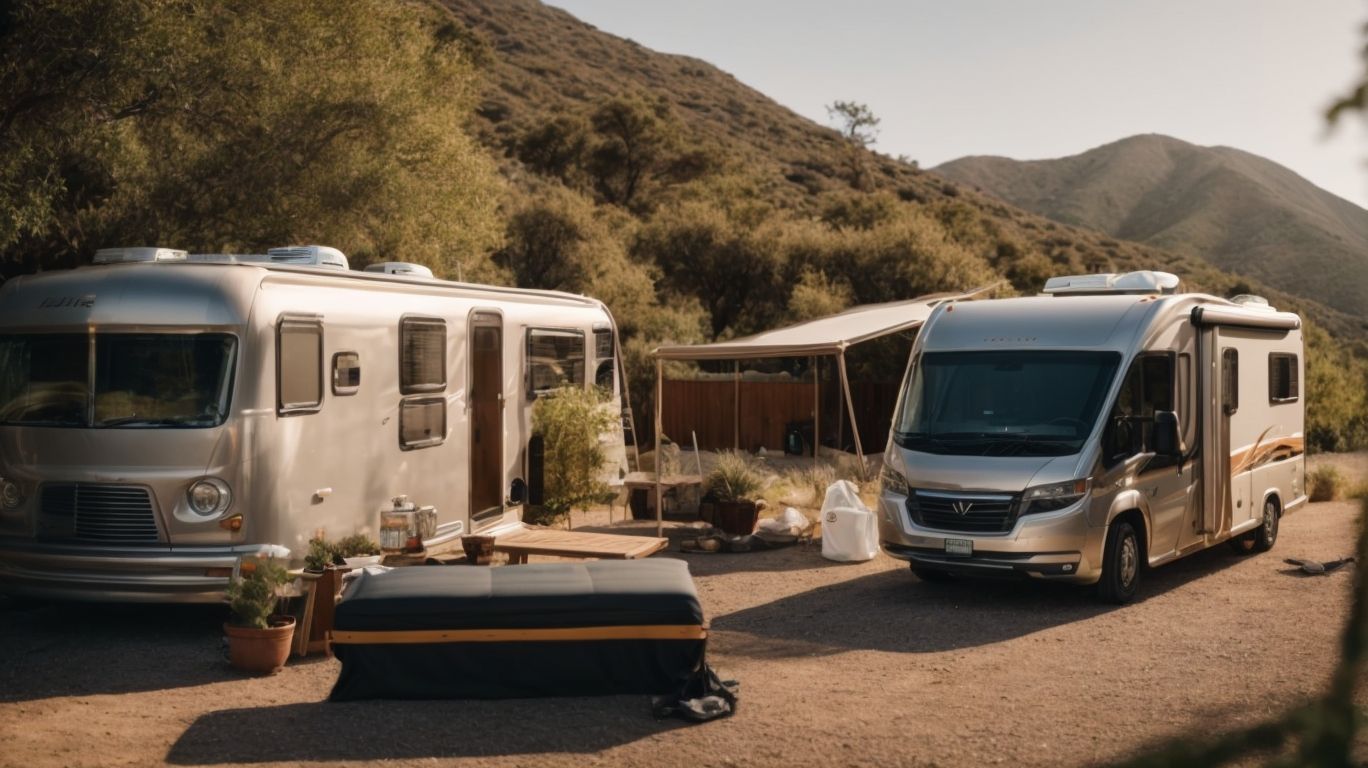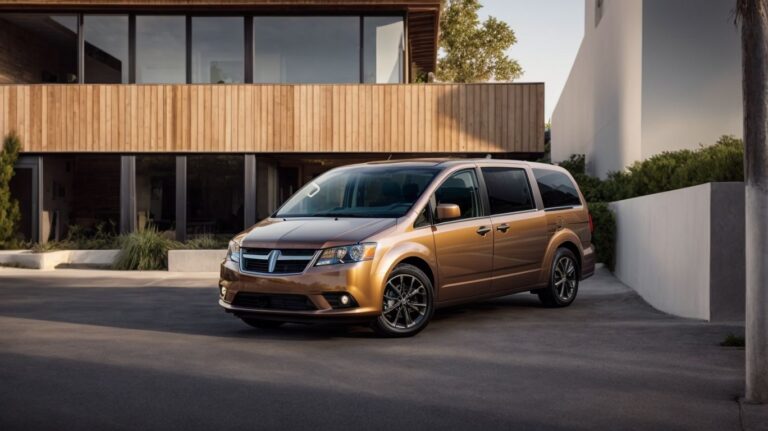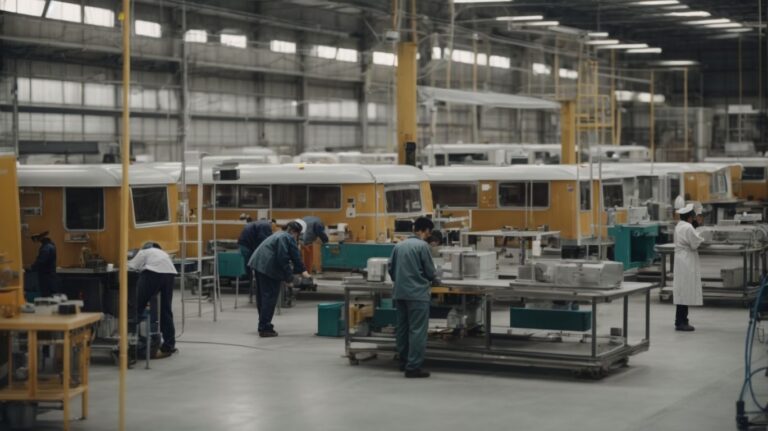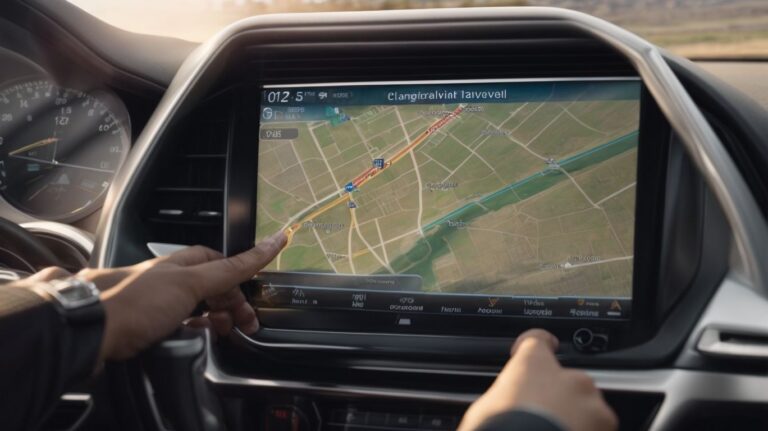Sustainable RV Living: Can You Power Your Caravan with Solar Panels?
Interested in sustainable RV living and reducing your environmental impact while on the road?
Discover the benefits of sustainable RV living, including cost savings and independence from traditional power sources.
Learn about the essential components needed for sustainable RV living, such as solar panels, batteries, and inverters.
Find out how solar panels work for RVs, the different types available, and the steps to install solar panels on an RV.
If you’re curious about powering your caravan with solar panels, keep reading to learn more.
Key Takeaways:
What is Sustainable RV Living?
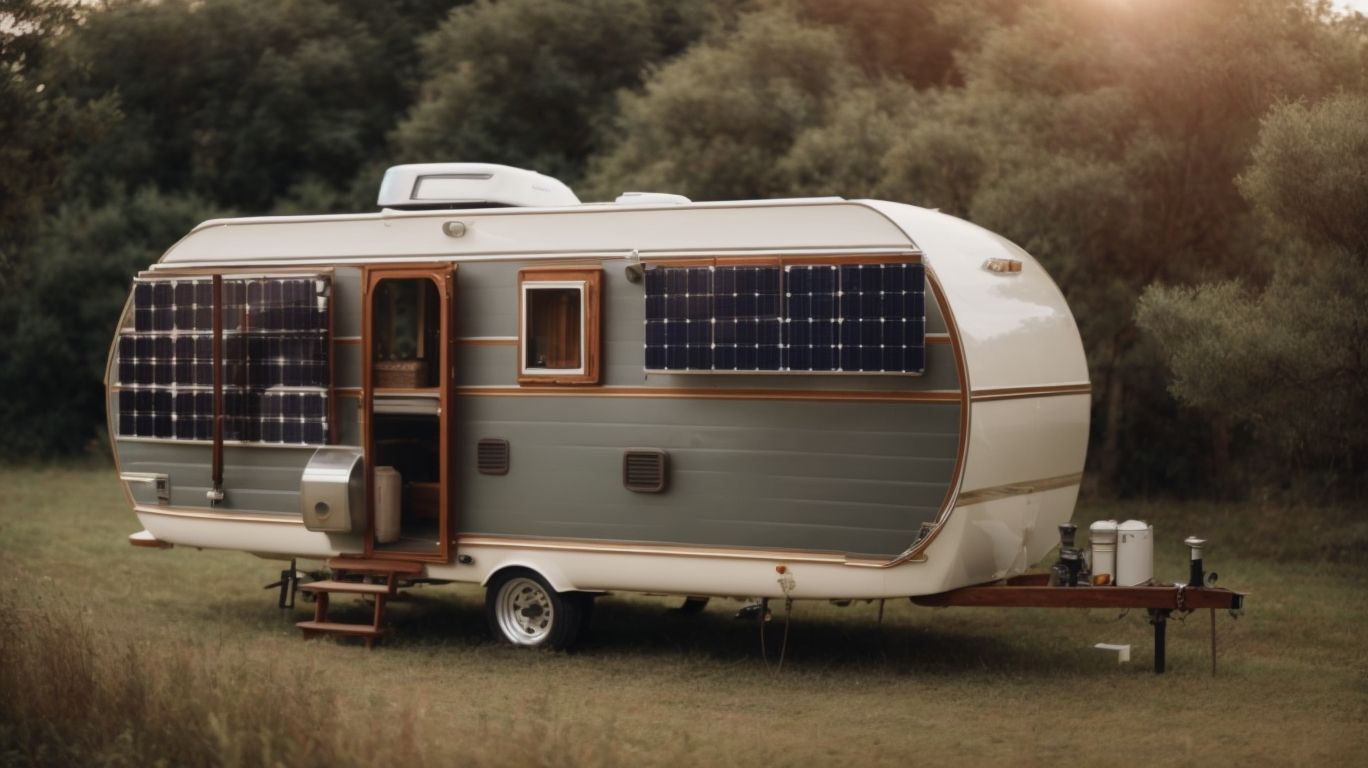
Credits: Motorcaravanning.Com – Gerald Brown
Sustainable RV living refers to the practice of living off-grid in a recreational vehicle while minimizing environmental impact through eco-friendly practices and utilizing renewable energy sources such as solar panels.
This lifestyle choice offers a multitude of benefits.
- eco-friendly practices such as composting toilets, rainwater harvesting, and using sustainable materials for renovations help reduce waste and conserve resources.
- Off-grid living allows individuals to connect more closely with nature while reducing their carbon footprint.
- Harnessing solar energy through panels on the RV not only provides a reliable power source but also significantly cuts down on the reliance on fossil fuels.
- By incorporating renewable energy sources, RV dwellers contribute to a greener, more sustainable planet.
What Are the Benefits of Sustainable RV Living?
Sustainable RV living offers a range of benefits including cost savings, reduced environmental impact, and the independence to live off traditional power sources by utilizing a solar system.
One of the key advantages of sustainable RV living is the significant cost-effectiveness it provides. By opting for this lifestyle, individuals can save money on housing expenses, as RVs offer a more affordable alternative to traditional homes. Integrating solar systems into RVs allows for harnessing renewable energy, reducing or even eliminating electricity bills. This not only results in long-term savings but also contributes to a more sustainable way of living.
Cost Savings
Achieving cost savings through sustainable RV living is not just about financial sustainability but also contributing to a debt-free lifestyle with smart investments.
Embracing a lifestyle centered around sustainability in RV living can bring about significant reductions in day-to-day expenses. By incorporating eco-friendly technologies, like solar panels for energy independence and efficient water systems to minimize waste, individuals have the opportunity to not only limit their environmental impact but also save substantially on utility costs over the long term. This financial prudence is a crucial component of achieving a stable and debt-free existence while enjoying the freedom and flexibility that RV living offers.
Reduced Environmental Impact
Embracing sustainable RV living leads to a reduced environmental impact by lowering carbon footprint and promoting sustainability for a greener future.
One of the key environmental advantages of opting for sustainable RV living is the significant decrease in energy consumption. By utilizing eco-friendly technologies such as solar panels and energy-efficient appliances, RVers can minimize their reliance on fossil fuels and lower their overall energy usage. Sustainable RV parks often incorporate recycling programs, water conservation measures, and natural landscaping, all of which contribute to a cleaner, more sustainable environment.
Independence from Traditional Power Sources
Sustainable RV living offers the unique advantage of independence from traditional power sources by harnessing solar power, effectively managing energy consumption for a self-sufficient lifestyle.
By utilizing solar panels on the roof of the RV, individuals can tap into renewable energy sources to power their appliances and electronics, reducing reliance on external electricity grids. Efficient power management practices, such as using energy-saving LED lights and devices, help optimize the use of available energy. Monitoring energy consumption becomes crucial in this lifestyle, as it allows RV owners to track their usage patterns, identify areas for improvement, and ensure long-term sustainability.
What Are the Essential Components for Sustainable RV Living?
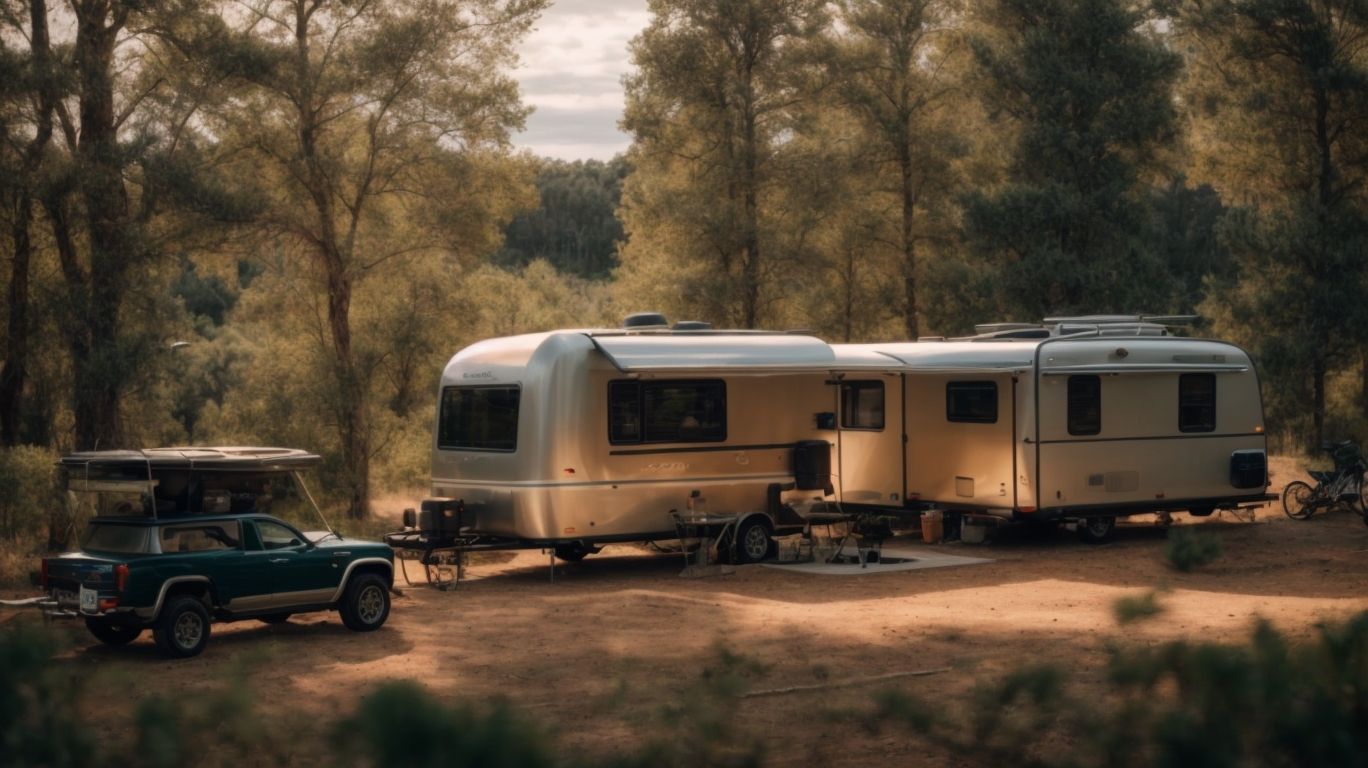
Credits: Motorcaravanning.Com – Jack Brown
The essential components for sustainable RV living include solar panels, batteries, an inverter, and a charge controller, all crucial for harnessing renewable energy efficiently.
Solar panels are responsible for capturing sunlight and converting it into electricity, serving as the primary source of power generation for RVs.
- Batteries are vital for storing the excess energy produced by the solar panels, ensuring a continuous power supply during periods of low sunlight or at night.
- Inverters play a key role in converting the DC electricity stored in the batteries into AC electricity that can be used to power various appliances in the RV.
- Charge controllers help regulate the flow of electricity from the solar panels to the batteries, preventing overcharging and optimizing energy efficiency.
Solar Panels
Solar panels are critical in sustainable RV living, providing a reliable source of solar energy through portable solar panels and solar generators.
By leveraging the capabilities of the sun, these panels enable RVers to operate essential devices and appliances off-grid, reducing their reliance on traditional energy sources. Portable solar panels offer flexibility, allowing users to tilt and position them for optimal sunlight exposure. This mobility ensures continuous power generation, especially during travel or camping trips. Solar generators serve as efficient portable power solutions, storing excess energy for later use and providing backup electricity during cloudy days or nighttime. Incorporating these technologies enhances the freedom and autonomy of RV enthusiasts, making their mobile lifestyle more sustainable and convenient.
Batteries
Batteries are essential for power storage in sustainable RV living, ensuring energy efficiency and reliable backup power for uninterrupted operations.
Regarding RV setups, having the right batteries can make all the difference in the world. RV batteries act as the heart of the electrical system, storing power generated by solar panels, generators, or shore power. This stored energy ensures that all essential appliances and devices inside the RV can function smoothly, even when off-grid. Batteries serve as a critical backup power source during times of limited sunlight or when generator usage is not feasible. The reliability and capacity of these batteries directly impact the comfort and convenience of RV life, making them a crucial component of any mobile living setup.
Inverter
An inverter is a critical component in sustainable RV living, facilitating power conversion to meet energy consumption needs and enabling effective power management.
When an RV is not connected to shore power or running a generator, the inverter plays a crucial role in ensuring that all the electronic devices and appliances on board receive the necessary electrical power. The inverter converts the DC power stored in the batteries into AC power, which is the standard form of electricity used by most household appliances.
Charge Controller
A charge controller plays a vital role in sustainable RV living by regulating the power flow from the solar system, ensuring optimal energy conservation and battery protection.
Charge controllers serve as the gatekeepers of energy within an RV solar setup, preventing overcharging of batteries which can lead to reduced battery life and potential safety hazards. By efficiently managing the flow of electricity, charge controllers help maximize the utilization of solar energy, ensuring that every ray of sunshine is converted into usable power.
They play a crucial role in safeguarding sensitive electronic devices and appliances onboard the RV by maintaining a stable voltage output. This not only enhances the lifespan of the equipment but also minimizes the risk of damage due to voltage fluctuations.
How Do Solar Panels Work for RVs?
Solar panels for RVs operate by harnessing sunlight through photovoltaic cells, which are then regulated by a charge controller before storing excess energy in battery storage.
The photovoltaic cells within the solar panels convert sunlight into electricity through a process known as the photovoltaic effect, where photons in sunlight knock electrons free from atoms to create an electric current. This electricity is then directed through a charge controller, which manages the flow of energy to prevent overcharging of the battery and ensures efficient utilization. The battery storage plays a crucial role in the system by storing excess energy produced by the solar panels for later use, especially during periods of low sunlight or at night.
Photovoltaic Cells
Photovoltaic cells are the core components of solar panels, responsible for converting solar energy into electricity through a process of photoelectric conversion.
When sunlight reaches the photovoltaic cells, they absorb the photons and generate an electric current through the photovoltaic effect. This current consists of direct current (DC) electricity, which is then converted into alternating current (AC) by inverters for use in homes or on the grid. The efficiency of photovoltaic cells varies depending on factors like material quality, design, and environmental conditions. Silicon-based photovoltaic cells are most commonly used due to their balance of efficiency and cost-effectiveness.
Charge Controller
A charge controller in RV solar setups regulates the energy flow from the solar system, ensuring optimal power management and preventing overcharging of batteries.
A charge controller acts as a crucial component in maintaining the health and efficiency of a solar power system. By constantly monitoring the voltage and current levels from the solar panels and directing the energy to the batteries in a controlled manner, it helps maximize the lifespan of the batteries. Moreover, charge controllers are designed to protect against deep discharges, which can significantly extend the longevity of the entire system.
Battery Storage
Battery storage is crucial in RV solar setups as it provides efficient energy storage, acts as a power backup, and stores surplus solar energy for use during low light conditions.
Having a reliable battery storage system in an RV equipped with solar panels is essential for ensuring uninterrupted power supply on the road. The batteries serve as a reservoir for the energy harvested by the solar panels, allowing RV enthusiasts to harness power even when the sun is not shining brightly. These batteries offer a safety net by providing backup power during emergencies or when the solar panels cannot generate sufficient electricity.
The ability to store excess solar energy in batteries enables RV owners to optimize their energy usage and reduce dependence on external power sources. This sustainable approach not only enhances the overall efficiency of the RV solar system but also contributes towards lowering energy costs and promoting eco-friendly practices. Utilizing stored solar energy during periods of limited sunlight ensures continuous operation of essential appliances and electronics within the RV, offering a seamless and eco-conscious travel experience.
What Are the Different Types of Solar Panels for RVs?
Solar panels for RVs come in various types including monocrystalline, polycrystalline, and thin-film options, each offering unique benefits in terms of efficiency and space utilization.
Monocrystalline solar panels are known for their high efficiency and durability, making them ideal for applications where space is limited. On the other hand, polycrystalline panels are more cost-effective and offer good efficiency levels. Thin-film panels, while less efficient, are incredibly flexible and lightweight, making them suitable for curved surfaces or places where weight is a concern.
Monocrystalline
Monocrystalline solar panels are known for their high energy efficiency and durability, making them ideal for RV applications where space and performance are crucial.
One key characteristic of monocrystalline solar panels is their efficiency in converting sunlight into electricity due to the purity of the silicon used in their construction. This purity allows them to generate more power in limited space, a vital feature in the constrained environment of an RV.
In addition, their durability is unmatched, as they can withstand harsh weather conditions and last for decades without significant degradation in performance. This longevity ensures a reliable source of power for RV owners on their travels.
Monocrystalline solar panels are also favored for RV installations because they are more efficient and require less maintenance compared to other types, such as polycrystalline or thin-film panels.
Polycrystalline
Polycrystalline solar panels offer a cost-effective solution for RV owners, providing moderate efficiency levels that balance performance with affordability.
Unlike monocrystalline panels, which are made from single silicon crystals, polycrystalline panels are manufactured using melted fragments of silicon. This process makes them more affordable to produce, allowing for cost savings that are passed on to consumers. RV setups, often constrained by budget considerations, benefit significantly from the budget-friendly nature of polycrystalline panels.
Although they have slightly lower efficiency levels compared to monocrystalline panels, polycrystalline panels still offer respectable performance, making them a popular choice for RV owners looking to strike a balance between cost and functionality.
Thin-Film
Thin-film solar panels are characterized by their lightweight and flexible design, making them ideal for RV applications that require versatility and adaptability in solar panel installations.
One of the key advantages of thin-film solar panels is their lightweight construction, which allows for easy transportation and installation on RVs without adding significant weight to the vehicle. Their flexible nature enables them to be mounted on curved surfaces or areas with limited space, providing greater installation options compared to traditional rigid solar panels.
Thin-film solar panels offer a practical solution for RV owners seeking portability and convenience in harnessing solar energy for their on-the-go adventures.
What Are the Steps to Install Solar Panels on an RV?
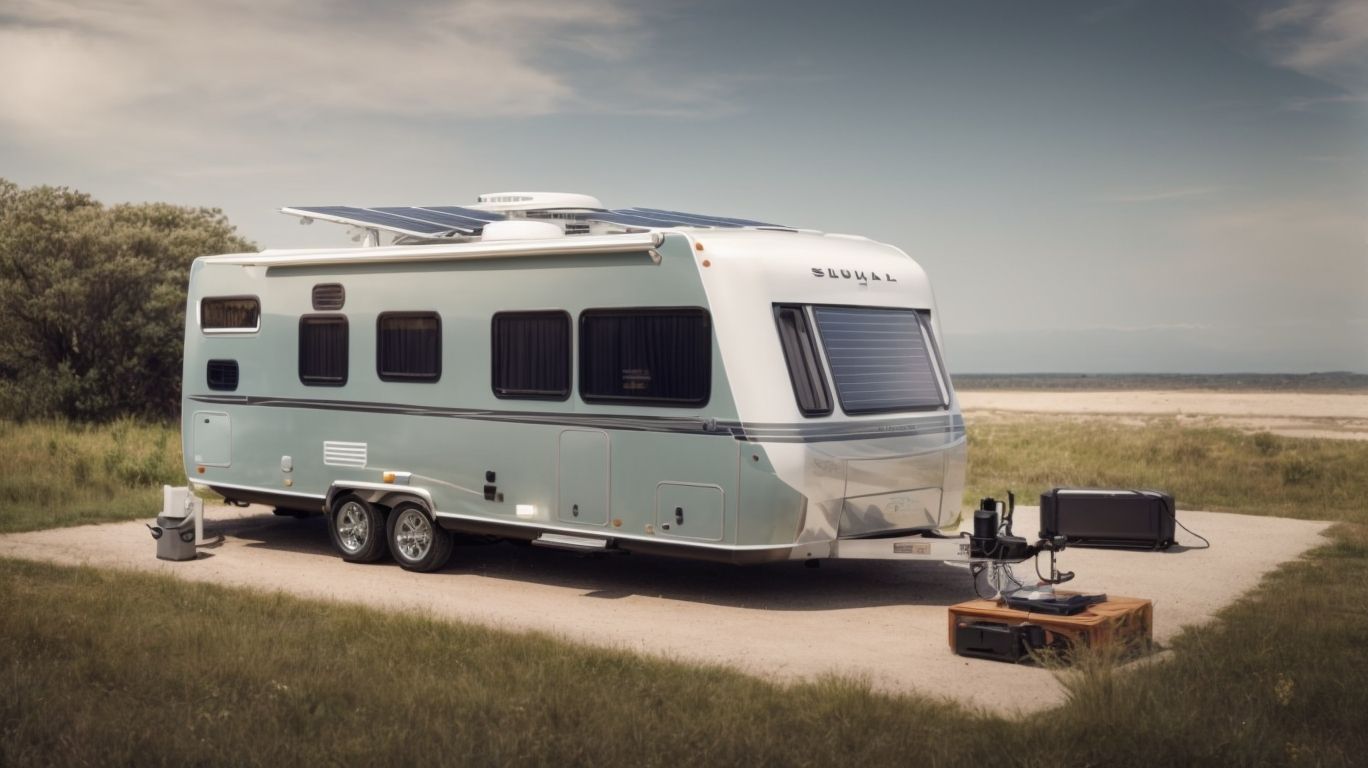
Credits: Motorcaravanning.Com – Frank Rodriguez
Installing solar panels on an RV involves several key steps such as determining power needs, selecting the appropriate solar panel type and size, mounting panels on the roof, connecting them to batteries, and installing inverters and charge controllers.
Before starting the installation process, it’s crucial to conduct an energy audit to calculate the power consumption of all your appliances and devices to estimate your RV’s daily energy requirements.
Next, choose a suitable solar panel type – monocrystalline, polycrystalline, or thin-film – based on your budget, available space, and energy efficiency needs. Then, consider the optimal panel size that fits on your RV’s roof and provides sufficient power output.
Determine Power Needs
The first step in installing solar panels on an RV is to determine the power needs based on energy consumption, power usage patterns, and the electrical appliances that will be powered.
When assessing power requirements for RV solar installations, understanding the energy consumption patterns of the vehicle is crucial. Calculating the power required during typical usage scenarios, such as overnight stays or extended road trips, helps determine the necessary solar panel capacity.
Taking into account the power usage habits of the occupants, like the frequency of device charging, lighting usage, and entertainment systems, aids in selecting the right size of the solar power system to meet their needs.
Choose Solar Panel Type and Size
Selecting the appropriate solar panel type and size is crucial for RV installations, with options including monocrystalline, polycrystalline, and thin-film panels, each offering unique advantages based on efficiency and space constraints.
Monocrystalline panels are known for their high efficiency rates and longevity, making them ideal for RV owners looking for maximum power generation in limited space.
Polycrystalline panels, while slightly less efficient, are more cost-effective and perform well in diverse lighting conditions.
Thin-film panels, on the other hand, are lightweight and flexible, allowing for unconventional installation options but often requiring more surface area for the same output as crystalline panels.
Mount Panels on Roof
After choosing the solar panels, the next step is to mount them securely on the RV roof, ensuring proper installation for optimal sunlight exposure and efficient energy generation.
Mounting solar panels on the RV roof is a crucial process that dictates the efficiency of your renewable energy system. To begin, ensure that the mounting brackets are securely fastened to the roof, using appropriate hardware to prevent any movement or damage during travel.
Once the brackets are in place, position the panels with the correct orientation to maximize sunlight absorption. Placing them facing south is generally recommended in the Northern Hemisphere to capture the most sunlight throughout the day.
Proper panel positioning is key to maximizing energy production and extending the lifespan of your solar setup. By following these steps diligently, you can make the most out of your RV’s solar power system.
Connect Panels to Batteries
Connecting the solar panels to batteries is a critical step to store the generated power efficiently, ensuring seamless energy transfer for powering onboard appliances and devices.
Once the solar panels have captured sunlight and converted it into electricity, the next crucial task is to channel this energy into the batteries. This process involves a charge controller to regulate the voltage and current supplied to the batteries, preventing overcharging and ensuring optimal battery health.
Efficient power storage is essential to make the most of solar energy in RV systems. The batteries act as the heart of the entire setup, storing the electricity generated during the day for use during nighttime or cloudy days. This stored energy is then transferred to the onboard appliances and devices via an inverter, which converts the DC power stored in the batteries into AC power, suitable for running most electrical equipment.
Install Inverter and Charge Controller
The final step involves installing the inverter and charge controller in the RV solar system, crucial for effective power management, energy conversion, and regulating the flow of electricity for optimized performance.
Regarding RV solar setups, the inverter plays a pivotal role in converting the DC power generated by the solar panels into AC power, which is essential for running various appliances onboard. It ensures a seamless transition and compatibility of power sources for a more convenient experience.
On the other hand, the charge controller acts as a guardian of the batteries, preventing overcharging and optimizing their lifespan. Its intelligent management system detects the battery status and adjusts the charging process accordingly, maximizing efficiency and safety.
Frequently Asked Questions
Can solar panels really power my caravan in sustainable RV living?
Yes, with the advancements in solar technology, it is possible to power your caravan with solar panels. Many RV owners have successfully switched to solar power for their energy needs.
How many solar panels do I need to power my entire caravan?
The number of solar panels needed will depend on the size and energy consumption of your caravan. It is recommended to consult with a solar specialist to determine the right number of panels for your specific setup.
Do I need to have a lot of sunlight for the solar panels to work?
Solar panels can still produce energy on cloudy days, but the amount of energy generated may be reduced. It is important to position your panels in an area where they can receive maximum sunlight for optimal performance.
Can I use solar panels to power all of my appliances in the caravan?
Yes, as long as your solar system is properly sized and your appliances are energy-efficient. You can also consider upgrading to energy-efficient appliances to reduce your energy consumption and make the most out of your solar power.
Are solar panels cost-effective for sustainable RV living?
In the long run, yes. While the initial cost of installing solar panels may be higher, you can save money on energy bills in the long term. Additionally, you will be reducing your carbon footprint and supporting sustainable living.
What other benefits do solar panels offer for sustainable RV living?
Solar panels provide a clean and renewable source of energy, reducing the reliance on fossil fuels. They also provide the freedom to travel off-the-grid and help reduce noise pollution from generators. Plus, with minimal maintenance, solar panels can last for decades, making them a reliable and cost-effective option for sustainable RV living.

